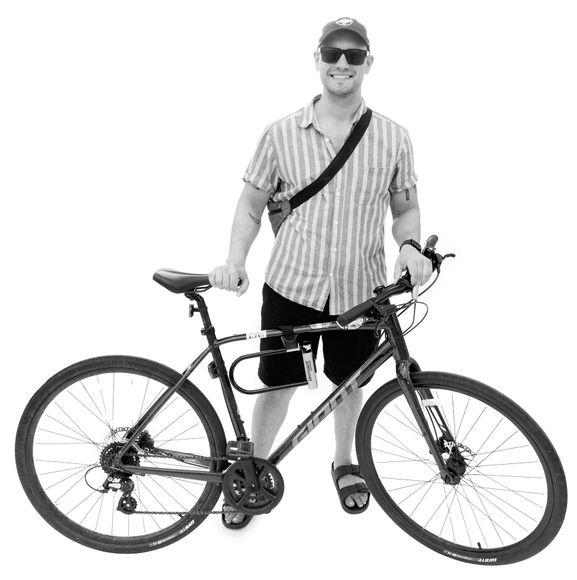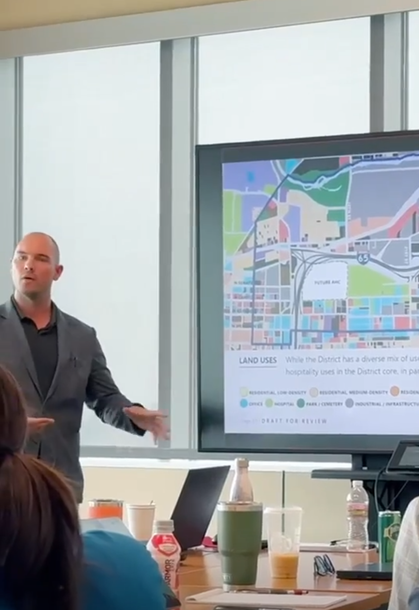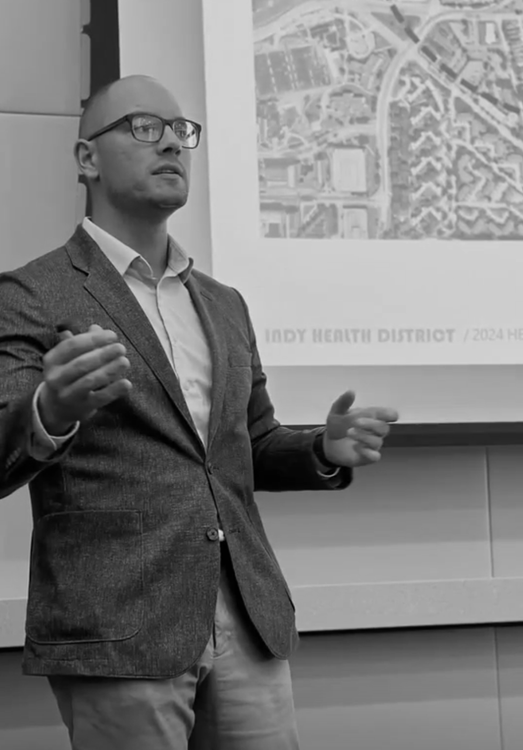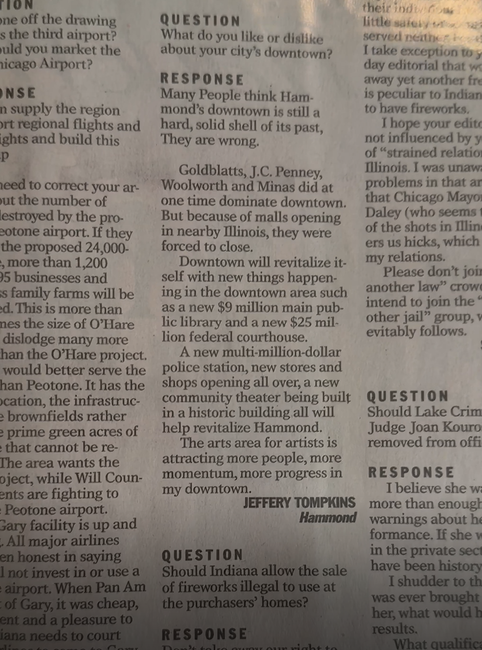"places are the mirrors by which we see ourselves"
[ethos]
I am from Hammond, Indiana and my dad worked in steel mills his whole working life. The elementary schools in Hammond I attended are now closed. The hospital I was born in is no longer there. These are common threads from where I'm from.
When I go back to the Region, my friends mention how bleak it is. But I would not trade my upbringing for anything. Helping places that have been left behind is a core reason I do what I do today. My 1990s childhood in a post-industrial metropolitan area undergoing massive population loss inspired me to find ways for places and people to empower themselves when their macro-systems fail. How development and emergent land uses could create and sustain joy. Growing up, I saw how urban gardens took over vacant housing lots. I watched how decay could become art.
And I saw how hope could be found in rethinking our places.
When I was 8 years old, going into 3rd grade, I lived in a hotel room on the outskirts of Hammond, as we were evicted from our home in the midst of my father’s drinking problem. It stuck with me, a father who could work years of millwork of 12-16 hours but could not claim victory over his vices. Like many in 'the Region,' I grew up in places overshadowed by a global city yet grounded by systemic failures that stifled their potential. I never forget where I came from, and that empathy toward others is a large reason I do what I do.
If you know Hammond or Gary well at all, you may understand them as blighted, disinvested, and crumbling. And you wouldn’t necessarily be wrong. But within highway walls and vacant lots are still neighbors living with leftovers. I have never given up on these places. Because a value us in the Region share is our resilience.
At their heyday, Hammond and Gary held over 150,000 people each. Now, both are home to less than 80,000. It's been my mission since I was a kid to figure out how to make places go.
Kintsugi is the Japanese art of repairing broken pottery pieces in which dismembered pieces are artfully reconnected, giving new life to something that would have been thrown away. This technique embodies a philosophy that what is broken can always be fixed, and what is fixed can always be broken. That our state of being rests between these two planes. And that our scars do not have to be hidden, but rather, can be used to recreate us in the hindsight image of battles we’ve faced. Like a phoenix rising from the ashes, the art of Kintsugi reminds us that we are not our defeats, nor are we what befalls us. We can always be pieced together. Even better than before.
That resilience mindset drives so much of what I do in planning. We cannot leave places and their stories behind without acknowledging what they got them there in the first place. How do those stories impact what happens next? It is that intersection where all the movement for hope happens. And I hope to help us get there.

[professional biography]
What makes your city go?
Jeffery Tompkins sees cities differently. Raised in Northwest Indiana, his love for urban life sparked young, riding the South Shore commuter train into Chicago, eyes wide at the pulse of a metropolis. That curiosity became a calling. Today, he’s an award-winning urban planner, designer, and architectural illustrator reshaping how America builds vibrant, equitable places from Indianapolis to Los Angeles, New York to Chicago.
In 2015, Jeffery launched INDYIMBY, a platform born from his passion for Indianapolis and smart development. What started as a blog has evolved into a statewide advocacy force, fighting for more housing and better cities, an ethos he’s scaling nationally. His journey took him to Ball State University’s College of Architecture and Planning, where he honed his craft in architecture, urban planning, environmental design, and real estate. There, he led a winning NAIOP proposal to reimagine Broad Ripple High School and earned a Shafer Fellowship for his immersive work on the Muncie Action Plan.
Jeffery has consulted for municipalities, firms, and developers across the country, wielding his sketchbook and strategic mind to turn bold ideas into real places. As co-lead planner of the Indy Health District, the largest planned health district in the U.S., he helped fuse health, equity, and urban design into a nationally watched model for institutional and neighborhood reinvestment.
In 2025, Jeffery launched Proformus, an urban design consultancy grounded in his belief that cities thrive when planning is both visionary and human-scaled. The firm builds on his years as Design Director at Meticulous Design + Architecture, where he shaped anchor institution districts and mixed-use frameworks across the globe. Clients from coast to coast trust his ability to synthesize local context with systems-level thinking, crafting communities that work for everyone.
A sought-after voice, Jeffery’s insights on multi-modal transit, housing, and urban growth have landed him in The Indianapolis Star, Indianapolis Business Journal, Urban Cincy, and the Livable City podcast. Named one of Indianapolis Monthly’s “200 Voices,” he’s also graced the Association of Collegiate Schools of Planning and beyond. His latest venture? His book, How to Make Places Go, distilling his belief that cities thrive when they adapt, not stagnate, is in the works now.
Jeffery’s plugged in professionally and locally. He’s active with ULI, CNU, APA, ASAI, and APBP, while serving on boards like the Indianapolis Cultural Trail (YP), Chatham Arch Neighborhood, and Mass Ave Cultural Arts District (co-chairing planning). When he’s not sketching or strategizing, you’ll find him biking Indy’s streets, cheering on the Cubs, reading voraciously, or doting on his cat, Jan — all from his Midwest perch.



